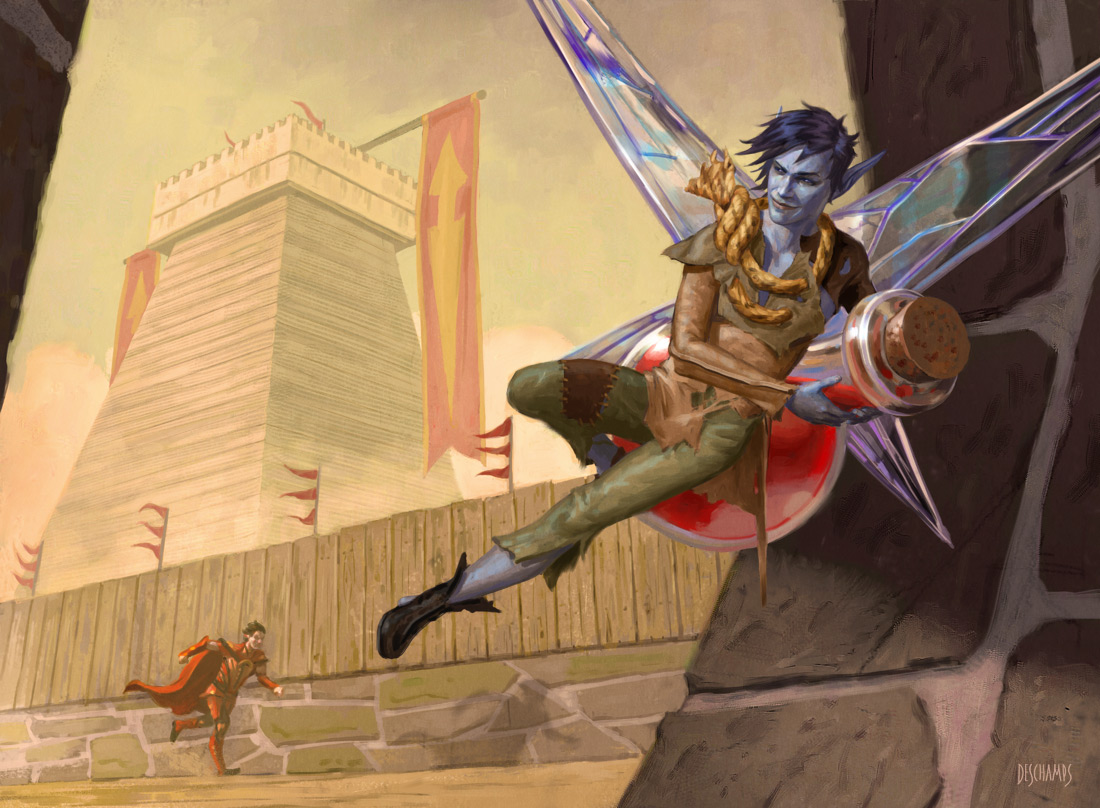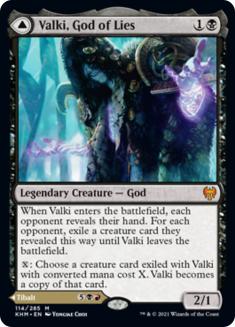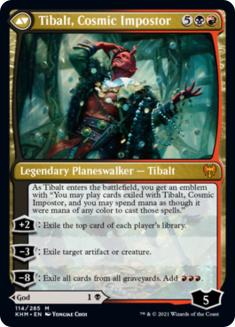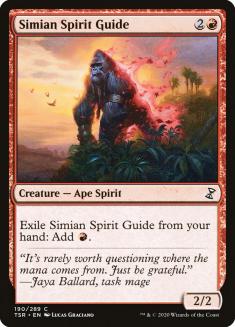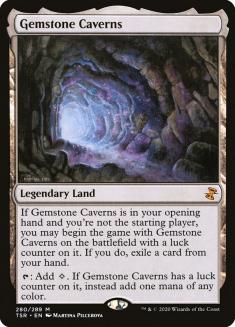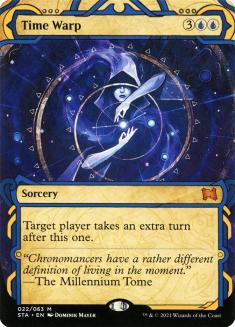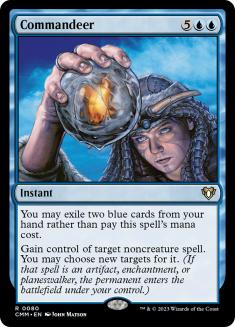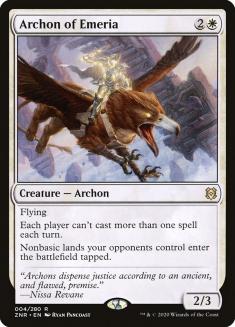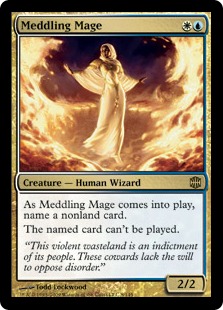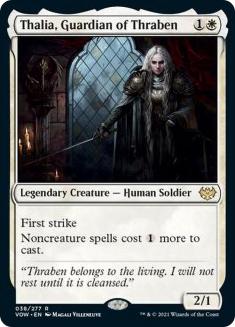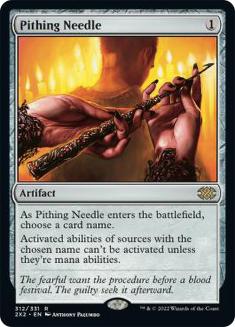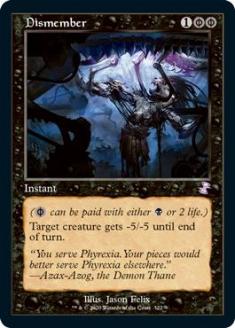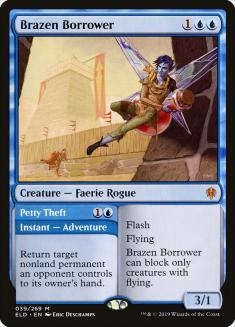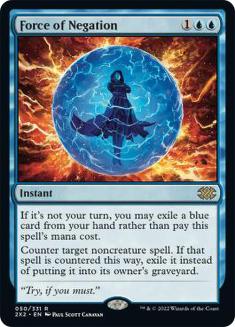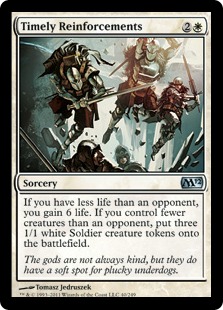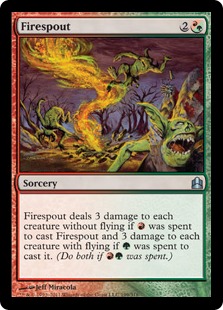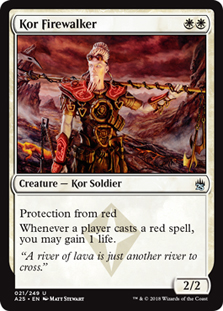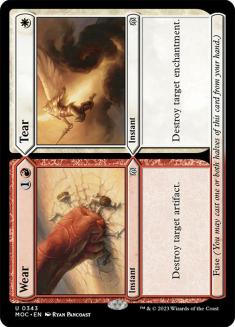CEDitor’s Note: Though Wizards of the Coast (WotC) has announced that they’ll be banning Uro, Titan of Nature’s Wrath in Historic, Pioneer, and Modern, they have not announced an exact date that banning will take place. Therefore, the contents of today’s article by Gerry Thompson are still highly applicable to your next Modern event. I hope you enjoy another great piece by Gerry and your remaining time left with everyone’s least favorite Elder Giant.
Well, Modern is broken again. Who would have expected a Mesmeric Fiend variant to be the culprit?
Really though, it’s a weird rule involving cascade that’s the issue here. If you cascade into Valki, God of Lies, you can cast Tibalt, Cosmic Impostor instead. You used to be able to do the same with split cards until their converted mana cost became the sum rather than both the individual costs. Perhaps the same should happen to Valki.
Adding Valki to your Jund Midrange deck is solid. Valki is a reasonable card to cast, but if you manage to Bloodbraid Elf into it, you get some serious extra power. Bryan Gottlieb suggested revitalizing Shardless Sultai in Legacy by including Valki but neither of those strategies impressed me.
However, using only Valki as your only card to cascade into is a much stronger plan. You can use Simian Spirit Guide and Gemstone Caverns to accelerate into those cascade spells while playing things like Brazen Borrower and Warrant for defense.
The good people of Magic Online (MTGO) have found the newest iteration of a broken Dark Depths-level combo deck. If you take a busted interaction, abuse it as much as possible, and still keep your late-game intact, you have the recipe for a format-defining deck.
Creatures (14)
Planeswalkers (4)
Lands (25)
Spells (17)
Sideboard

The first thing you need to realize is that Tibalt doesn’t beat opponents on its own, especially if your deck is full of nonsense. Once you have Tibalt on the battlefield, you will either plus it because you know it’s not in danger of being killed or remove an immediate threat. From there, Tibalt will draw you two cards per turn and you’ll eventually bury your opponent. Given enough time, you’ll beat your opponent with their own cards.
Since you can play the lands Tibalt exiles, you’ll often have an excess of lands in hand, which makes Uro great. Uro gives you something to do with your excess mana and helps prevent you from running out of gas. You’re somewhat at the mercy of the tops of both players’ decks but you’re a huge favorite to win whenever you have Tibalt on the battlefield. I’ve certainly lost games after I’ve activated Tibalt multiple times, although it’s a rarity.
This deck plays Simian Spirit Guide and Gemstone Caverns but you aren’t necessarily looking to shove against everyone. It also packs a solid late-game but you need the mana acceleration to keep up with some of the faster decks in Modern.
You take a decent amount of damage from your manabase, Dismember, and the fact that you don’t do much early. Given that the games go on for a while, you’re going to want some lifegain and ways to go over the top. For those reasons, I can’t see playing without Uro.
The real selling point for me was how Tibalt interacts with Mystic Sanctuary. You can put Cryptic Command on top of your deck, exile it with Tibalt, and assemble a soft lock by tapping their creatures and bouncing your Sanctuary. It’s exactly what this deck needs. Mystic Sanctuary can also put Violent Outburst back on top of your deck against decks with discard or counterspells, so you get extra percentage points in those matchups.
The maindeck has a few flexible slots. I like all four copies of Brazen Borrower, since it’s one of the best ways to deal with an opposing Tibalt. Dismember; Timely Reinforcements; Supreme Verdict; and Omnath, Locus of Creation are all solid options. You could make a case for split cards like Warrant // Warden, Far // Away, and Dead // Gone as well, though the blue ones help you cast Force of Negation.
Time Warp is another interesting angle that I haven’t seen anyone try. You can abuse it with Tibalt in a similar fashion to Cryptic Command but it’s not as versatile as Cryptic Command.
Some players have decided to get clever and play Commandeer as a way to gain an edge in the mirror. As someone who played Commandeer maindeck in a Pro Tour, I can confirm that playing it is a bad decision. Yoinking an opposing Tibalt is good in theory but the cost is too high and unlikely to happen all that often.
Mystical Dispute is likely a better card for mirror matches, even if it doesn’t line up against Tibalt itself. If you do play Commandeer, I’d recommend playing a Sea Gate Restoration to get an extra blue card in the deck. I’d much rather max on Brazen Borrowers in my deck before I touch Commandeer. It solves similar problems but is stronger in more matchups.
There are some matchups where you’ll want four copies of Valki, plus it’s a fine draw early. I’d certainly want a black Triome if we go that route. So far, I’ve had opponents grind through two Tibalts only to lose to the third, so the fourth hasn’t seemed necessary.
We have plenty of conflicting interests in regards to the manabase, so getting the right mix feels tricky. Gemstone Caverns isn’t exactly a must but the upside is huge. Other than the consideration of having excess blue cards to exile to Force of Negation, you don’t particularly care about having a massive amount of resources. A single Tibalt will give you enough if it lasts a few turns.
You want UUGG for Uro, plus three Islands for Mystic Sanctuary and any Cryptic Command cast without Tibalt, and sometimes you’ll naturally draw your two-drops and want to cast them. Ideally, you’ll be able to cast Ardent Plea or Violent Outburst when you have three mana and be able to use Mystic Sanctuary on Turn 4 or 5. Choosing what to fetch might be the most difficult part about playing this deck.
Sideboarding Leylines make sense for the versions that are all-in on Tibalt. However, once you play with the deck, you’ll realize that Tibalt alone won’t solo your opponents and you’ll need some backup. As the games go on longer and you dig deeper into your deck, you’ll appreciate being able to cast your spells.
Maybe Leyline of the Void beats graveyard decks, so you don’t care about having many castable spells. The same can’t be said for Leyline of Sanctity, although it does do plenty of work against burn and discard decks. Since Tibalt is very poor against both of those decks, I’m happy adjusting what I cascade into.
Modern is a scary format with plenty of tools for disruption. Disruptive creatures like Archon of Emeria; Meddling Mage; and Thalia, Guardian of Thraben usually need to be killed. Maximizing your ability for Turn 2 Tibalt will only get you so far. You need spots in your deck devoted to answering these problems.
Some decks are naturally good against Tibalt. Graveyard decks, combo decks, and go-wide aggro decks can very easily beat it. Those need addressing as well. Then there are the things that people might start playing in order to beat you, such as Pithing Needle.
VS Four-Color Control
Out:
In:
Against decks with Force of Negation, you may want to try cascading on their turn even if you don’t get the immediate Tibalt activation. Force of Negation is one of their few ways to interact with Tibalt, plus it means your Force of Negations are live if they have something like Mana Leak.
VS Rakdos Death’s Shadow (Lurrus)
Out:
In:
You need to keep the smaller creatures in check to protect Tibalt. Firespout and Dismember might not be great against Death’s Shadow or Scourge of the Skyclaves but they’re a necessary evil. These games can be difficult but there’s no better feeling when you navigate perfectly around disruption and a clock.
VS Burn
Out:
In:
Burn doesn’t care about Tibalt and can usually ignore it. After sideboarding, we can become a Kor Firewalker combo deck. They’ll have some ways of dealing with it, especially in the coming weeks, so it’s hardly a lock. Save your Force of Negations for Skullcrack if you can.
Thankfully, cards like Deafening Silence don’t matter as much against the plan of cascading into Kor Firewalker. Roiling Vortex is actually pretty annoying and one of the main reasons I’ve added a Wear into the sideboard.
VS Death & Taxes
Out:
In:
How you sideboard against white aggro decks depends on what kind of hate they’re bringing to the table. If they have noncreature hate cards, you probably want to keep in your Force of Negations. In the dark, I’d expect the majority of their interaction to be creature-based.
VS Dredge
Out:
In:
You could try Wheel of Sun and Moon here to keep your Uros and Mystic Sanctuaries unlocked. Sadly, you’ll probably lose to whatever they’ve already dumped into their graveyard, so it’s not a viable plan. If you expect more of the Oops All Spells deck and less Dredge, it would be fine.
Two copies of Rest in Peace probably won’t be enough if you want to consistently win this matchup, but the aggro decks deserve more respect at the moment. If you have additional slots, devote them to Ravenous Trap or Leyline of the Void.
When you’re on the play, you can shave a Gemstone Caverns if you want but I’ve enjoyed having the mana source against everyone.
Five-Color Cascade isn’t going to get you a 100% win rate but it’s one of the best decks I’ve had the pleasure of playing. Achieving an 80% win rate against unprepared opponents isn’t unreasonable. As players adapt to one part of the deck, you can lean into the other portion to punish, similarly to how Dark Depths did it back in the day.
Play this deck until it’s gone.

